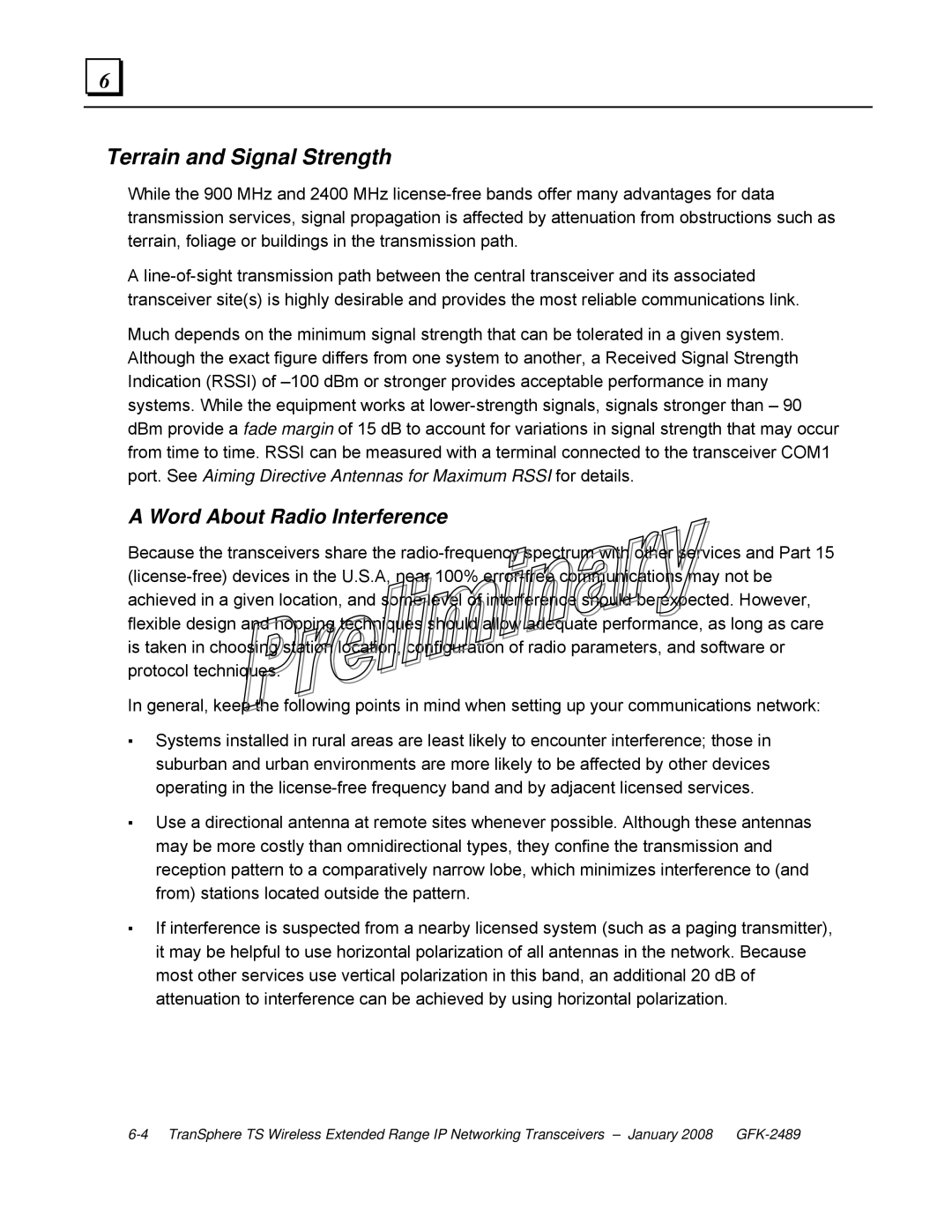Terrain and Signal Strength
While the 900 MHz and 2400 MHz license-free bands offer many advantages for data transmission services, signal propagation is affected by attenuation from obstructions such as terrain, foliage or buildings in the transmission path.
Aline-of-sight transmission path between the central transceiver and its associated transceiver site(s) is highly desirable and provides the most reliable communications link.
Much depends on the minimum signal strength that can be tolerated in a given system. Although the exact figure differs from one system to another, a Received Signal Strength Indication (RSSI) of –100 dBm or stronger provides acceptable performance in many systems. While the equipment works at lower-strength signals, signals stronger than – 90 dBm provide a fade margin of 15 dB to account for variations in signal strength that may occur from time to time. RSSI can be measured with a terminal connected to the transceiver COM1 port. See Aiming Directive Antennas for Maximum RSSI for details.
A Word About Radio Interference
Because the transceivers share the radio-frequency spectrum with other services and Part 15 (license-free) devices in the U.S.A, near 100% error-free communications may not be achieved in a given location, and some level of interference should be expected. However, flexible design and hopping techniques should allow adequate performance, as long as care is taken in choosing station location, configuration of radio parameters, and software or protocol techniques.
In general, keep the following points in mind when setting up your communications network:
▪Systems installed in rural areas are least likely to encounter interference; those in suburban and urban environments are more likely to be affected by other devices operating in the license-free frequency band and by adjacent licensed services.
▪Use a directional antenna at remote sites whenever possible. Although these antennas may be more costly than omnidirectional types, they confine the transmission and reception pattern to a comparatively narrow lobe, which minimizes interference to (and from) stations located outside the pattern.
▪If interference is suspected from a nearby licensed system (such as a paging transmitter), it may be helpful to use horizontal polarization of all antennas in the network. Because most other services use vertical polarization in this band, an additional 20 dB of attenuation to interference can be achieved by using horizontal polarization.
6-4 TranSphere TS Wireless Extended Range IP Networking Transceivers – January 2008 GFK-2489

